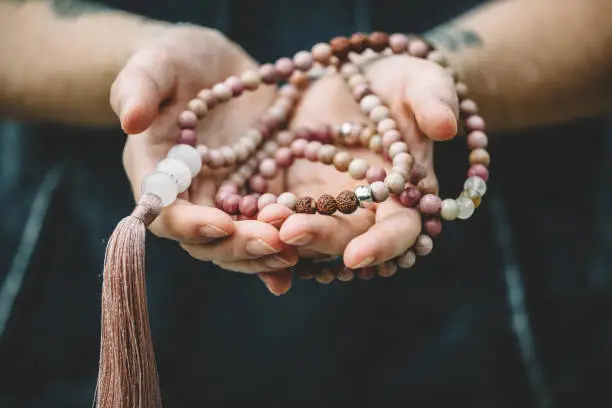A japamala is a rosary used in meditation. It can be made of any material, but the most common are wooden beads or semi-precious stones. Each japamala bead represents a mantra, and the mantras are repeated during meditation.
Japamalas have been used in India and Tibet for centuries, and the first records of their use date back to the 11th century. They were introduced to the West in the 1960s by Tibetan monks who came to the West after the Army invaded Tibet. Chinese Red.
What is a Japamala?
A Japamala is a rosary made of beads or seeds that is used for the practice of Buddhist meditation. It can be made from a variety of materials, such as wood, stone, or metal, and usually has between 108 and 1,000 beads. Beads are used to help maintain focus during meditation and can also represent various Buddhist teachings.
Japamalas can also be used to say prayers and mantras. Many people believe that beads can help focus positive energy and attract good luck.
The History of Japan
Japamala is a set of beads used for religious or meditative purposes. Its origin is uncertain, but it is believed to have emerged in India or Tibet. The word “japa” means repetition and “mala” means beads, so “japamala” literally means “repeating beads”.
Japamalas can be made from many different materials, including wood, bone, precious or semi-precious stones, shells, copper, and even plastic. Beads are typically divided into two equal halves, with 108 beads on each side. Each of these 108 beads represents one of the 108 Names of God in Hinduism or one of the 108 Upanishads.
People use japamalas to repeat mantras or prayers, as a means of meditation or simply to connect with divinity. People often use japamalas to count the repetitions of a mantra so that they can concentrate on its pronunciation and meaning.
Japamalas are also used in India as a reminder of God. People can hang them in their homes or take them with them when they travel. Some people even use japamalas as a form of adornment, choosing beads that match their personal style or reflect their religious beliefs.
How are Japamalas made?
Japamalas are necklaces or beads worn for religious purposes, where they are worn by followers of Hinduism and Buddhism. However, Japamalas are also used by people of other religions such as Islam, Judaism and Christianity. Some people wear Japamala just because they think it's cute or elegant. Beads can be plain or decorated and can have a special meaning for the wearer.
Japamalas can be made in many ways. Beads can be hand wound on a thread, attached to a ribbon or string, or even strung together. Some people also use machines to wind the beads, especially if they are very large or heavy.
Japamalas have been used for centuries by people of different religions and cultures. They are particularly popular in India, where they are used by Hindus as a religious symbol. However, Japamalas are also popular in other parts of the world, including Japan, China, Russia and the United States.
The different types of Japamalas
Japamalas have been used for centuries by Hindus and Buddhists as a means of meditation and devotion. They are composed of beads that represent the different elements of nature, and each one is made of a specific material that represents it. There are many different types of malas, each with its own meaning and properties.
The simplest japamala is made up of only 108 beads, which represent the 108 elements of nature. These japamalas are usually made of wood or copper, and are used to help with meditation and concentration.
There are also more complex malas, which include additional beads to represent other aspects of nature. Some of these japamalas have thousands of beads and can be made of materials such as gold, silver or crystal. They are used for special purposes, such as protection against the evil eye or to attract good luck.
How to use a Japamala?
Japamalas are used as an instrument of meditation, devotional and prayer. Its purpose is to help the user concentrate and stay focused during meditation. There are many ways to use a Japamala, but here are some tips to get you started:
– Sit in a comfortable position with your legs crossed and your hands on your knees. This will allow you to focus on your Japamala without worrying about posture.
– Hold the Japamala in your right hand and use your index finger to wrap around one of the counters. The thumb should be used to rotate the Japamala counterclockwise.
– Concentrate on your breathing and the repetition of the mantra or prayer. Keep the rhythm of your breathing as you spin the Japamala.
– You can repeat the mantra or prayer out loud or mentally, depending on your level of concentration.
– Keep turning and repeating the mantra until you are ready to finish.
Alternatives to Japamala
Japamala is a meditation technique used by Hindus and Buddhists, which consists of repeating a mantra or prayer using a rosary bead. Despite being an effective method for concentration and relaxation, not all meditation practitioners are comfortable with using Japamala.
There are several alternatives to Japamala that can be used in meditation, such as:
– Wooden beads: they are lighter and easier to handle, in addition to being ecologically correct;
– Gemstones: beads can be made from different types of stones, each with its own specific meaning;
– Digital accounts: there are applications that allow you to control the repetitions of a mantra, being a great option for those who do not like to use physical objects;
– Breathing: the conscious breathing technique can be used as a form of concentration during meditation, allowing the practitioner to free himself from external distractions.
Conclusion
When using a Japamala, it is important to keep in mind its meaning and the intention behind it. It is a symbol of belief and faith and should be used with respect. As such, it is important to understand what is being done before simply wrapping a Japamala in your hands.
After all, did you like to know more about? Let us know in the comments and don't forget to share with your friends and family.



